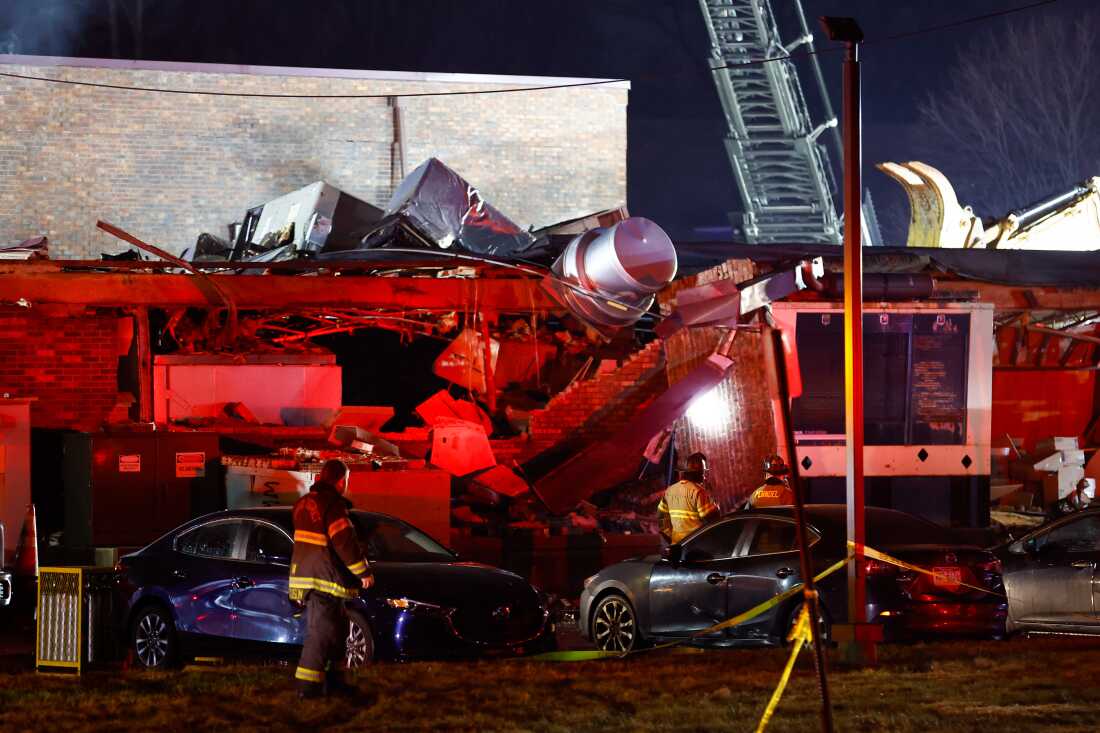Israel has launched a wave of air strikes across Lebanon after its military said it would target Hizbollah-affiliated financial institutions, widening its offensive against the militant group.
An Israeli intelligence official said the strikes were intended to attack Hizbollah’s economic “system and strongholds”, with a focus on branches of the al-Qard al-Hassan association. Lebanese state media reported on Monday that Israel had struck 11 times in Beirut’s already heavily bombed southern suburbs, where Hizbollah had its headquarters, and in other locations across the country.
The strikes came ahead of an expected visit to Beirut by White House envoy Amos Hochstein on Monday and were heard across the capital overnight. Footage posted on social media showed one of the strikes causing a large fire and at least one building collapsing.
The attacks will confirm Lebanese fears that Israel is expanding its offensive against Hizbollah beyond military infrastructure. The Iranian-backed movement is also Lebanon’s dominant political force and has a large network of economic, social and political interests across the country.
Many ordinary Lebanese, mostly from the Shia community, use the al-Qard al-Hassan (AQAH) financial network, which has branches countrywide.
Israel has issued orders to Lebanese people to evacuate areas in Beirut and other parts of the country close to Hizbollah-affiliated financial institutions.
“We will strike several targets in the coming hours and additional targets throughout the night,” said Israel’s military spokesperson Rear Admiral Daniel Hagari.
The Israeli intelligence official said Israel would be attacking “different branches of al-Qard al-Hassan all over Lebanon”.
But they hinted that Israel could broaden its campaign against Hizbollah’s financial network, saying the group received funding from Iran through Syria and from Lebanese businesses affiliated with the group, as well as donations from individuals.
“The purpose of these strikes is to target the ability of Hizbollah to function both during the war but also afterwards, to rebuild and to rearm the organisation on the day after, and [to target] the grip Hizbollah has on large parts of the Lebanese society,” the official said.
AQAH, officially a non-profit, was hit with sanctions by the US in 2007. Washington said the organisation’s affiliation with Hizbollah allowed the US-designated terror group access to the “international banking system”.
Experts say it is one of Lebanon’s largest financial institutions in terms of its client base and reach. In 2021, then-Hizbollah leader Hassan Nasrallah said about 300,000 people had loans with AQAH, adding that it had provided loans worth $3.7bn to 1.8mn people since being founded in the 1980s.
It offers small, interest-free loans in US dollars, backed by a guarantor or by gold deposits. Many people use these loans to pay for school and university fees, weddings and small businesses. It is also one of Hizbollah’s main tools in its patronage networks and social services, which helps sustain its popularity. The system gained popularity after Lebanon’s economic crisis left many banks insolvent.
Israel stepped up its offensive against Hizbollah last month, initially saying its goal was to push the group back from the Lebanese border to ensure that about 60,000 people displaced from northern Israel by rocket fire would be able to return.
But since Israel assassinated Nasrallah and other top officials in the group last month, it appears to have expanded its goals, launching air strikes across the country and invading the south.
The Israeli military has acknowledged mistakenly killing three Lebanese soldiers on Sunday after firing on a Lebanese army vehicle in the Hanine area of south Lebanon. The Lebanese army confirmed that the soldiers were killed, without offering further details.
The Israeli army said it had misidentified the truck, following an earlier incident in the same area involving what it said was a Hizbollah vehicle, and apologised for the “unwanted circumstances”. Five Lebanese soldiers have now been killed by the Israeli military in the past 10 days.
The conflict with Hizbollah erupted after the Lebanese group fired rockets towards Israel a day after Hamas’s October 7 attack. Fighting was mainly contained to the border region before Israel escalated its offensive last month.
Israel’s offensive in Lebanon has killed more than 2,400 people and forced more than 1.2mn to flee their homes, mostly in the past three weeks. About 80 Israeli civilians and soldiers have been killed by Hizbollah fire in northern Israel and during the ground offensive into southern Lebanon.
Despite the blows to its leadership, Hizbollah has continued to launch drones, rockets and missiles. Last week, it vowed that “a new and escalating phase in its confrontation” would begin.
On Saturday, it fired a drone that hit a structure in the northern seaside town of Caesarea, where Netanyahu has his private residence, causing the prime minister to accuse the group of trying to assassinate him.
His office confirmed the home was targeted but said Netanyahu and his wife were not present and no one was hurt.











































